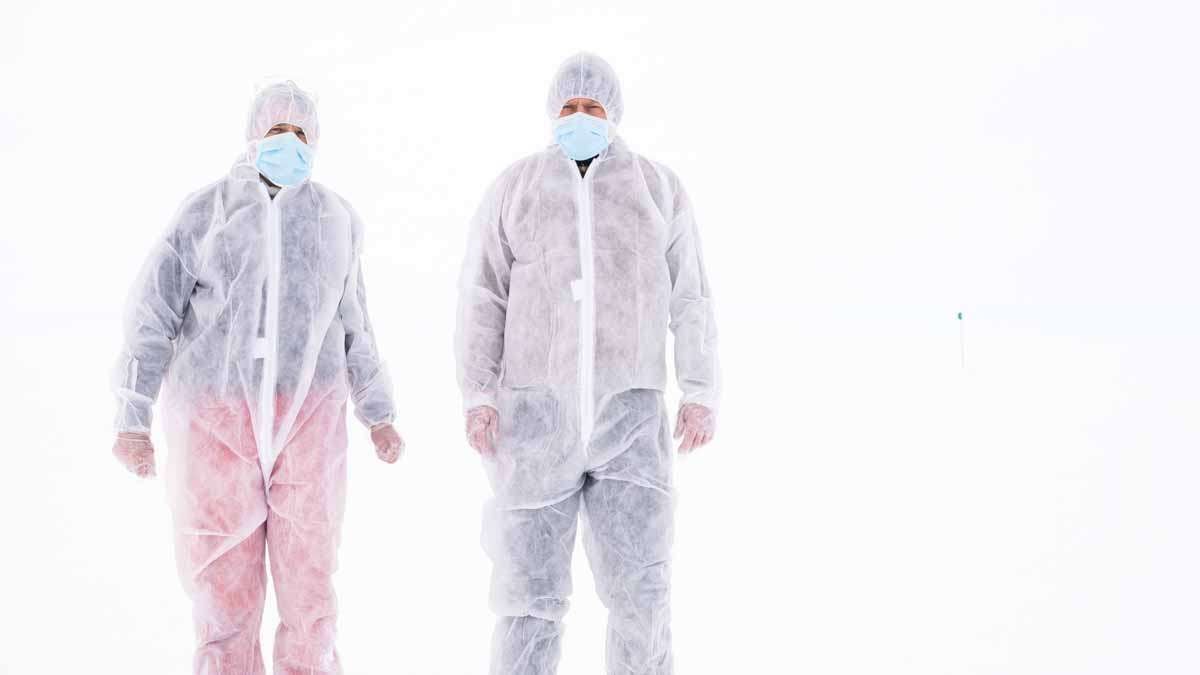A journey into a world deep below Antarctic ice
ListenAntarctica, along with being one of the coldest places on Earth, is also a hotbed of scientific research. As a freelance journalist, Douglas Fox has traveled to the continent on five separate occasions, bringing back stories of whales under pressure, fish where you wouldn’t expect them, and the collapse of fragile ice shelves.
We spoke with Fox in detail about a 2013 reporting trip, in which he tagged along with a drilling team trying to access Lake Whillans, located a half-mile under the surface in western Antarctica.
We recommend you listen to the audio of this story by clicking the ‘play’ button above. The transcript is provided here:
So it is a hot water drill, and this machine, in total, weighs about a million pounds. It fills several large cargo containers that had to be towed out onto the ice 600 miles of glacier, using a fleet of tractors. So you are basically just heating water and then lowering a hose down into the hole and gushing hot water. So it sounds really simple, but it turned out to be really complicated.
All kinds of things can happen down there. The ice, under so much pressure, it is kind of like silly putty. It is not really a solid anymore, and the hole, literally, gradually oozes shut on you. The hole is only about two feet across, so it is two feet across and half a mile deep if you get down to the lake. So there is a lot that can go wrong. You can’t actually see what is happening, so you really have to go by steering by Braille, steering by senses that are not vision, and it is really challenging to know what’s happening.
Something like 12 percent of the world’s land area is covered under ice, under thousands of feet of ice. Sometimes up to a mile, two miles, even almost three miles. And these areas have never been seen before by human eyes. There are mountain, entire mountain ranges up to five or seven thousand feet, lakes and rivers that have never been seen. We only have shadowy indications of them from studies like ice penetrating radar. So this was really kind of a first glimpse of tapping into this world that has never been seen.
When they finally sent the camera down and actually saw mud at the bottom and water, one of the first things they did was send down a sort of mud grabber. This series of tubes that were shoved into the mud underneath, and brought up. And when they are brought up, the winch was creaking and the ice is crackling off of it, and finally this thing comes up and it just looks like a frozen mudsicle. This dark, glistening mud was dripping off onto the snow. And it is really kind of an amazing thing, because you are in a place where there is nothing but ice for hundreds of miles around, it is just big, flat, white in the middle of the west Antarctic Ice Sheet, and suddenly there is something just so simple and mundane as a mud dripping down. And even that is strange. And also just the sense that this stuff hasn’t seen sunlight in maybe 100,000, 200,000 years. And depending on the history of this place, maybe as long as a million years. And that is just staggering in itself. And people were just really excited that we had actually gotten into the lake, and a few of the people, the crane operators were later on that day, taking the mud and painting whiskers and designs on their faces.
When you touch it, it is full, it is surprisingly gritty, and full of this glacially ground shards of rock. But you get it under the microscope, and you can see hundreds and hundreds of what look like little pieces of shattered glass. Just pure, beautiful, curved glass. And these are diatom shells, and these are diatoms, they are microscopic organisms that live in the ocean, they photosynthesize like plants do. And then when they die, they settle down to the bottom of the ocean. And what these were, were really a record of a warmer time about 10, 15, 20 million years before.
I think, it is funny, the cold, you are there during the summer time during the west antarctic ice sheet, and the cold isn’t as extreme as you think it was. Just the fact, the first summer that I was down there, I was sleeping in a red tent, and just the color of that tent, being not white, would absorb a lot of sunlight. Because the sun is there 24-hours a day. And I had a thermometer hanging up in my tent, and sometimes I would wake up in the morning and I couldn’t peel my sleeping bag and my clothes off of me quickly enough, because the temperature, in Fahrenheit, it would be in the 70s, or 80s, one time is was 98 degrees inside my tent. And this is 84.5 degrees south of the equator, 380 miles from the South Pole. And your body heat is warming the tent, but so is the sun. So it is pretty crazy.
It’s funny, I’ve spent six or seven months of my life down there total, and yet, I would say almost weekly, maybe a couple times a week, I have dreams that are set down there. It is often a very different place. Sometimes there are trees, sometimes it is the Transantarctic Mountains that are covered in juniper and pinon forest like Arizona, where I grew up. But it is always Antarctica, and somehow it just sort of stays with you.
WHYY is your source for fact-based, in-depth journalism and information. As a nonprofit organization, we rely on financial support from readers like you. Please give today.








